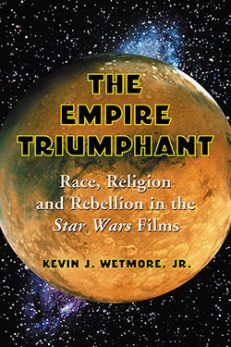
 McFarland was not even five years old when we stretched our editorial mission beyond mainstream library books to include military memoirs. Founder and president Robert Franklin received an unsolicited manuscript from a Vietnam War veteran and felt McFarland just HAD to publish it (Vietnam-Perkasie: A Combat Marine Memoir, 1983). The author, William D. “Bill” Ehrhart, would become an iconic voice for soldiers struggling to understand their Vietnam War experience, through his teaching, poetry, essays and interviews. McFarland went on to publish many, many such memoirs on the Vietnam War, World War II, Desert Storm and even World War I as well as diaries and letter collections from Civil War soldiers.
McFarland was not even five years old when we stretched our editorial mission beyond mainstream library books to include military memoirs. Founder and president Robert Franklin received an unsolicited manuscript from a Vietnam War veteran and felt McFarland just HAD to publish it (Vietnam-Perkasie: A Combat Marine Memoir, 1983). The author, William D. “Bill” Ehrhart, would become an iconic voice for soldiers struggling to understand their Vietnam War experience, through his teaching, poetry, essays and interviews. McFarland went on to publish many, many such memoirs on the Vietnam War, World War II, Desert Storm and even World War I as well as diaries and letter collections from Civil War soldiers.
Some years ago, I was representing McFarland at a conference on military history. During the course of the conference, a professor-type stopped into our booth to thank McFarland for publishing so many firsthand accounts of combat experiences. He indicated that it was an important perspective that added richly to battle statistics, battle descriptions and the politics of war. He said that our memoirs were a unique body of work, unlike the publishing output of any other publisher. It was good to get that kind of feedback from the field.
The collection of McFarland Vietnam War memoirs now represents more than three decades of publishing but its relevance will never be obsolete. The Vietnam War was almost certainly the last war using the draft, the result being soldiers from every socioeconomic stratum fighting shoulder to shoulder. From a sales standpoint, the Vietnam War memoirs were eclipsed by World War II accounts early on. This continued to be true until around 2010 when Vietnam War memoir sales numbers started showing greater strength. The sales interest has been particularly strong with ebook readers. This morning’s Amazon rankings of our best sellers in this area are:
Killer Kane: A Marine Long-Range Recon Team Leader in Vietnam, 1967–1968 by Andrew R. Finlayson (2013)—#2 Biographies & Memoirs > Leaders & Notable People > Military > Vietnam War
Rice Paddy Recon: A Marine Officer’s Second Tour in Vietnam, 1968–1970 by Andrew R. Finlayson (2015)—#4 in Kindle Store > Kindle eBooks > Biographies & Memoirs > Historical > Military & Wars > Branches > Marines
The Crouching Beast: A United States Army Lieutenant’s Account of the Battle for Hamburger Hill, May 1969 by Frank Boccia (2013)—#4 in Books > Biographies & Memoirs > Leaders & Notable People > Military > Vietnam War
Ghosts and Shadows: A Marine in Vietnam, 1968–1969 by Phil Ball (1998)—#1 in Books > Biographies & Memoirs > Leaders & Notable People > Military > Vietnam War
Pucker Factor 10: Memoir of a U.S. Army Helicopter Pilot in Vietnam by James Joyce (2003)—#21 in Kindle Store > Kindle eBooks > Biographies & Memoirs > Historical > Military & Wars > Branches > Air Force
To celebrate this success, Veterans Day, and most of all, our authors, their service and their remarkable stories, the McFarland staff has created an opportunity for everyone to get a meaty slice from two dozen of these fine works in a book-length collection. ’Nam Raw offers in ebook form excerpts of 24 of our Vietnam War memoirs. Because the experiences are so varied from every branch of service and the perspectives from various ranks, this is an extraordinary window on the Vietnam War experience. There are gripping descriptions of the fear of battle, bloodlust and questioning whether actions were murder alongside soaring descriptions of heroism. The best part is that you can get a copy here FREE. NOTE: You must have a computer, smartphone or e-reader to view ebook.
For convenience and in hopes of the widest distribution possible, we are also offering this unique ebook on Amazon, Google Play and Barnes & Noble (available soon) for a tiny fee. Tell us what you think!
 Follow Rhonda Herman on Twitter (@RGBHerman).
Follow Rhonda Herman on Twitter (@RGBHerman).









 Today is the last day to take advantage of our huge sale on
Today is the last day to take advantage of our huge sale on 















































































 Follow Rhonda Herman on Twitter (
Follow Rhonda Herman on Twitter (










